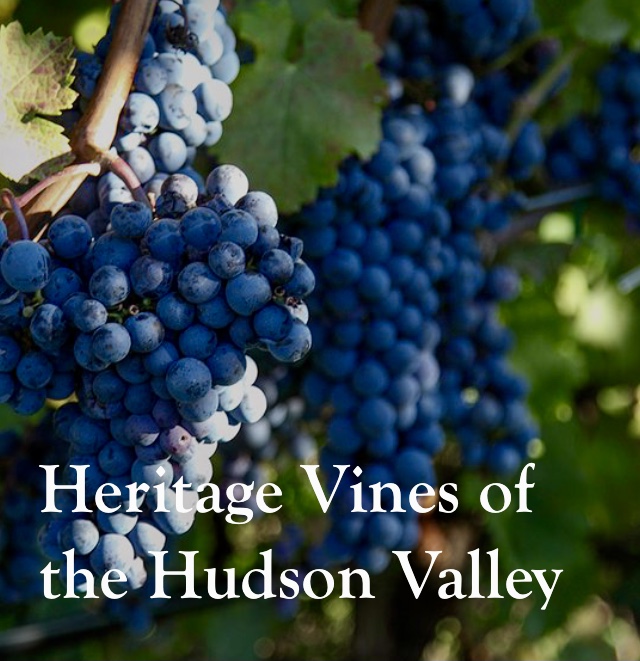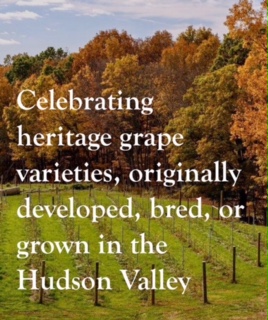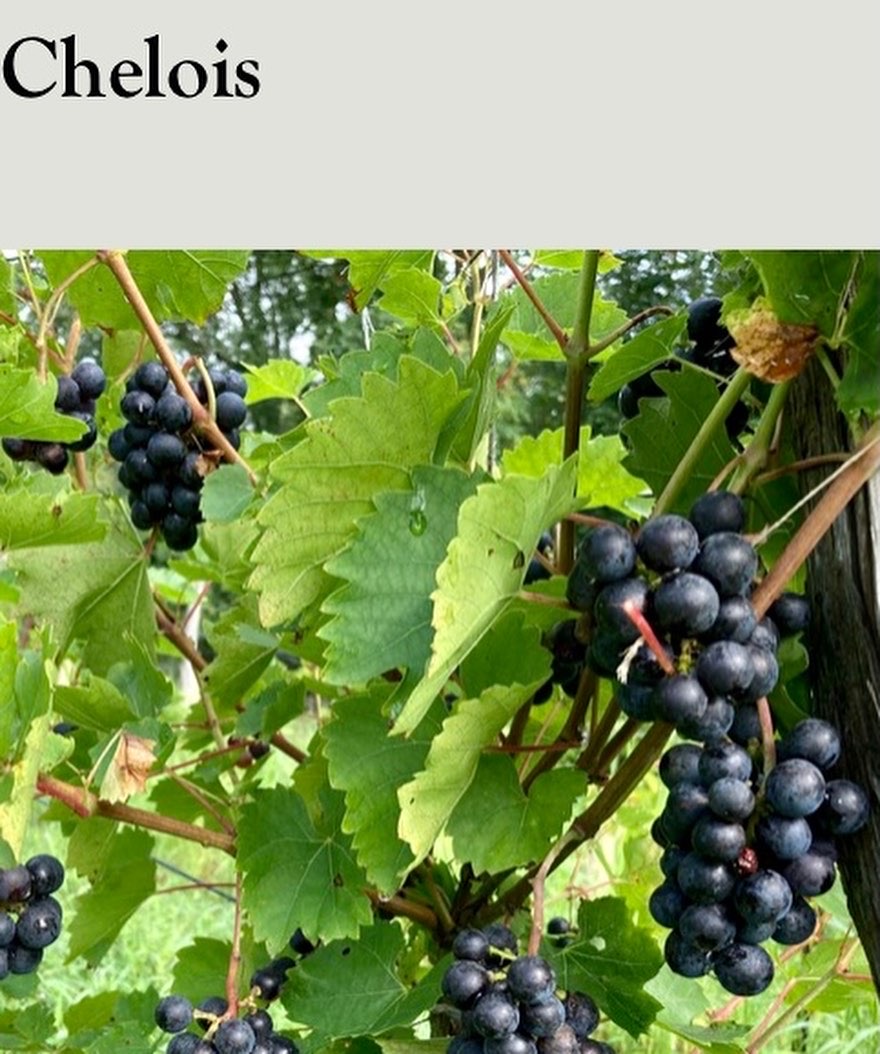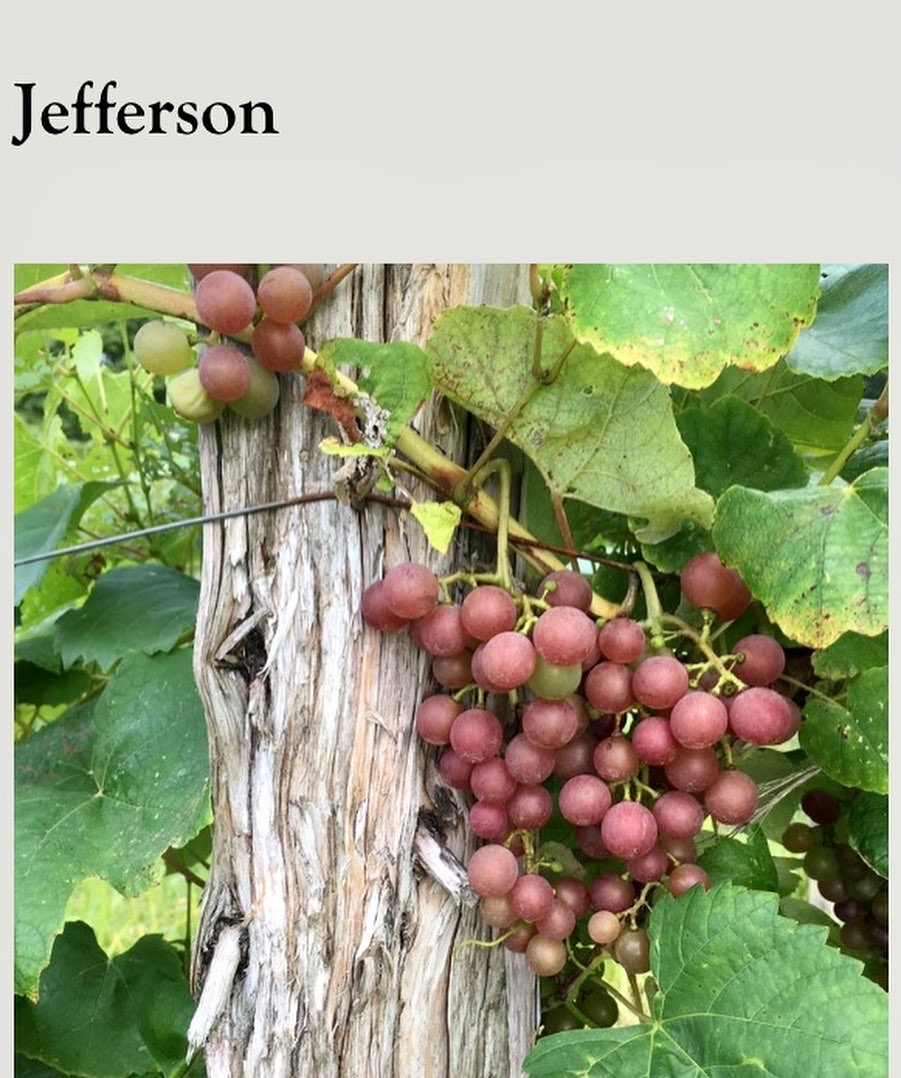The 2018 growing season in the Northeastern United States turned out to be one of the most challenging in recent years. I contacted several of the top winemakers/vintners to get their thoughts and opinions about the 2018 season. After reading their responses I decided I couldn’t tell their stories with the same insight and emotions as they did so I am publishing their experiences in their own words. I hope these personal and candid accounts of a difficult year gives you a better understanding of what it takes to grow grapes and make wine in Pennsylvania and New York.
Chuck Zaleski is owner/winemaker of Fero Vineyards & Winery Lewisburg, PA (Central Pennsylvania). Chuck has always been willing to help me with my blog and I have found him to be honest and straight-forward with his assessments. Thank you Chuck for your guidance and insight. http://ferovineyards.com
The 2018 grape season in Pennsylvania will be one for the ages, not in a good way. Every grower I know had difficulties this season unlike they had seen before. The flooding, often daily, rains and high humidity started in July and never let up. The direct effects were delayed ripening, higher levels of powdery and downy mildew, and more fruit rot. Yields were down dramatically. The effort required in the vineyard this season was extreme. In our vineyard, the white varieties were more susceptible to mildew and rot. The reds held up a little better but did not ripen as well as usual. As winemaker and vintner, I directed our crew to selectively hand-harvest only the best fruit. We were able to process it in a more favorable style for this vintage. The winemaker’s adjustments in the cellar can really help the final product. We went with more blush production from our red wine grapes. We had a little Saperavi that got ripe enough for red wine. The white varieties were able to mature with good sugars and aroma but in much lower quantities.
Extreme weather like this is a learning opportunity to the attentive vintner. There are limits to the effects of different techniques in managing a vineyard. This season demonstrated those limits. We have developed a plan for the vineyard that will allow us to better handle a year like this and improve the crop in better years. We survived and will be stronger because of it.
Fred Frank is President of Dr. Konstantin Frank Wine Cellars and third generation winemaker at Dr. Frank’s Winery on the western shore of Kueka Lake Hammondsport, N.Y. (Finger Lakes Wine Region). Fred has always been willing to help me and our conversations have given me a greater understanding of winemaking in the FLX and for that I will always be grateful. http://drfrankwines.com
This has been a challenging harvest for the later ripening varieties. The early varieties did well and we are pleased with their quality. We started our harvest with the sparkling grapes which included Chardonnay, Pinot Noir and Pinot Meunier. All were picked by hand and we were able to sort while picking to insure that we would only harvest high quality grapes. The next grapes to be picked were Gruner Veltliner and Chardonnay that came in with excellent quality. We picked several of our red varieties early for Rose production. This included Pinot Noir, Blaufrankisch and Cabernet Franc. We are excited to be increasing our Dry Rose production to match the increased consumer demand. The most challenging variety later in the season was Riesling due to abundant rainfall. We were able to pick some blocks earlier and also do some sorting and dropping of bad fruit prior to harvest. I will keep you updated as we finish our fermentations with the quality assessment later in the year.
Rich Ripepi owner/winemaker at Ripepi Vineyard Monongahela, PA (Western Pennsylvania) planted his vineyard on property just a short walk over the hill from his home when a vineyard in this region was unheard of. We have all heard that old real estate adage “Location, Location, Location” being the key to success and it was as true for Rich Ripepi’s vineyard this year as it is for a property’s value. His vines are planted on a steep southeastern facing hillside virtually in sight of the Monongahela River. Thanks to Rich and all the Ripepi Winery family for always greeting me with a warm welcome and making me feel like one of the family when I visit. http://ripepiwine.com
The harvest this year was the biggest surprise in 30 years of our vineyard. The excess rain increased the juice quantity of our grapes. However, because the rain came from the south, almost all the nights were above 70 degrees, and this made maturity of the grapes the best in 30 years. We are very optimistic about the 2018 vintage.
Tod and Jean Manspeaker have overcome many obstacles to get to the point where their Briar Valley Vineyard & Winery consistently produces award-winning dry wines with premium Vinifera grapes from their own vinifera only vineyard. The Briar Valley Vineyard is on a southeastern facing slope at an elevation of 1200 feet in the foothills of the Allegheny mountains. Briar Valley Vineyard & Winery Bedford, PA (South Central Pennsylvania). Thanks to Tod and Jean for all the support and friendship you have shown me over the years. http://briarvalleywinery.com
As for the harvest and vintage overall, all I can say is I hope we never experience another one like it in my lifetime. It was rain, rain and more rain. The vineyard lay wet most of the season. We sprayed more often than normal. It seemed a vicious cycle of spray, leaf pull, hedge and repeat. We harvested some of the varieties early because the brix weren’t moving and we were worried about rot. Fortunately, we had little rot. The acids and ph in most of the varieties were good, but the brix in all varieties was low. We were careful to reduce crop yield to aid in ripening. We harvested the whites earlier than normal. The reds we allowed to hang in an attempt to tweak a bit more ripeness from them. We harvested our last variety, Cab Franc, on October 12th. The Chardonnay and Riesling are showing well early on. They will have a little less mouthfeel than the 2017 vintage, but have nice flavors. Of all red varieties, the Lemberger will be the star. The other varieties are rounding out and coloring up nicely. They will be leaner than the 2017 vintage, but will each have their own personality. I suppose, all in all, for the challenges presented in 2018, we are fortunate that our wines are developing as well as they are.
I got to know Steve Casscles after reading his book “Grapes of the Hudson Valley and Other Cool Climate Regions of the United States and Canada”, available on Amazon at http://amazon.com/Grapes-Hudson-Valley-Climate-Regions/dp/0982520832 You might know Steve for his pioneering work with French-American hybrids and his preservation effort with Hudson Valley heirloom varieties not to mention his encyclopedic knowledge of wine grapes. Thanks to Steve for his detailed account of this years growing season at Hudson-Chatham Winery and all the other help he has provided me. Hudson-Chatham Winery Ghent, N.Y. (Hudson Valley).
It was an average Spring, but a bit hot and dry (which is generally abnormal), but lately has not been abnormal at all. For the past few years, I have set out new vines in the early spring to 80 plus temperatures and dry soil conditions. This year I planted about 40 new vines of Palmer, Chelois, Valerian and other old heirlooms like Diana, Winchell and Banc Blanc. While it was not a completely inhospitable Spring, it was relatively dry, but with enough spurts of rain, so all of my new vines did well and my new nursery stock did OK with some watering.
In later June, it was pretty dry and by early July it rained and rained and rained and continues to rain to this day. So on average, not so warm due to the rain and clouds, but lots of rain. I have never in my 40 years of growing grapes seen so much rain.
Different grape varieties handled the rain differently. My Hudson Valley Heirlooms such as Iona, Jefferson and Empire State did not do so well and lots of black rot. In the Hudson Valley we tend to get more black rot than powdery or downy mildew. These varieties did not fair well at all this time of year. My E.S Rogers hybrids (Salem, MA) also did not fair well at all this year except for Agawam. French-American hybrids did OK even with all the rain. I sprayed a lot, about ever 10 days and used light not hot stuff. Surprisingly not a lot of fungus disease hit the Foch, Baco,Burdin, Chelois or Chambourcin. I had very good production from all of these varieties. Due to the higher than average rainfall, high production levels and cool temperatures our sugars were low. Most years we pick at 21 or 22. This year we picked 18 and were glad to have taken off the crop. In September the sugar levels did not move after 9/10 so we cried “Uncle” and picked our grapes. In the end our Foch and Leon Millot (Wagner clone) was very productive and surprisingly good acids (19-20 brix). Our Baco Noir, very productive and did sugars no higher than 18 to 19. Our Palmer red variety (a chance hybrid that I grow here that tastes more like a Malbec or a Chianti) was pretty productive and came in low in sugars at 18 by the 3rd week of September. Some powdery mildew. Our Concord, a bell weather for the Northeast, was not so good with lots of rot, low sugars and it came in late.
We are evaluating our wines now and surprisingly deep colors and acid levels are OK. In the cellar it will be an OK year.
Jim Baker and I became friends when he reached out to let me know that he was growing and making Saperavi. Jim and Cathy Baker are owners/winemakers of Chateau Niagara Winery New Fane, N.Y. (Niagara Lake Plain). Saperavi isn’t the only grape that has proven to be an award-winner from Jim’s vineyard. The Bakers have planted and meticulously cared for a dynamic and diverse vineyard that keeps improving every year. Thank you Jim for your in-depth account of this year’s harvest, a year none of us will ever forget. http://chateauniagarawinery.com
The 2018 harvest was one of the best in Chateau Niagara’s history. We had a few ups and downs, but overall a great harvest. The fruit quality was the best we have ever had. This is due largely to the addition of a mechanical leaf picker and mechanical hedger, and improved spay protocol. We added a mechanical leaf plucker which allows us to remove the leaves in the fruiting zone in a cost effective, and most importantly, timely method. We are able to do our entire 7 acres of vines in two days, versus one month of hand pulling. The addition of the hedger helped us keep the growth and vigor that we experienced in check. We moved to a 7 day spray schedule compared to the 14 day spray schedule we have used in the past. This showed much better results. We were able to add in a late season spray of Hydrogen Peroxide, a very benign spray that readily breaks down in the environment. This had the effect of halting any late season rots that have plagued us in the past with Fall rains.
The weather this year was interesting. We had a cool, wet start to the year that was followed by a hot, dry summer. We checked on the heat accumulation season and found that we had exceeded 3100 growing degree days (GDD). Our historical average is about 2500 GDD. This extra heat should have made this a superior year. What we found at harvest was an interesting result. This should have been a year with impressive sugars, but turned out to be rather lackluster. Our first fruit came in about 20 brix, or 20% sugar. Expected results in a year like this would have been 24-26 brix. That was however, the only downside. Harvest levels hit their targets, except for the Riesling, which turned in a bumper crop. Ph levels were spot on in 3.3-3.5 levels in the reds and 3.2-3.4 in the whites. Fruit flavors are magnificent and TA levels are within target for the fruit, All in all, a very good year. The initial sampling of the wines so far indicate deep flavors with varietal character.
John McGregor and his McGregor Vineyard are probably best know for his Black Russian Red wine but he also offers a selection of award-winning wines made from his vineyard that dates back to the trailblazing days of Vinifera in the Finger Lakes Wine Region of New York. I have found John to be refreshingly outspoken and passionate when it comes to his desire to make the best wine possible from his grapes. http://mcgregorwinery.com
It would be an understatement to say that 2018 was an interesting year for weather here in the Finger Lakes. The cool winter air lingered around right up to May. In fact, I believe we experienced the second coldest April on record. This was immediately followed by the second warmest May on record! Early summer was quite hot and dry we had 90+ degrees for over 20 days in June alone. It stayed hot right into early fall and we were “treated” to excessive precipitation and to humidity that just wouldn’t quit. Ultimately, we ended up with greater problems with sour rot in the vineyards. Pinot Noir and Riesling seemed to be hit hardest in our vineyard, along with the Sereksiya Rose (the variety we blend with Rkatsiteli). In fact we left the entire crop of Sereksiya Rose on the vines, the sour rot just took it over. We ended up dropping more fruit to the ground than typical and instructed our pickers to leave much more behind on the vines than I can ever recall doing. All in all, we finished harvest early and yields in our vineyard were fairly average. This by no means was a disastrous year and much of what came into our cellar was really nice. Surprisingly, our Gewurztraminer was on the side of spectacular. Our Cab Franc, Cab Sauvignon and Saperavi did well. I expect some really solid wines to be produced from this vintage…time will tell!!!
Greendance – The Winery at Sand Hill is the closest winery to my home. It’s synergy with Sand Hill Berries is just too perfect to be a coincidence. In fact, it was the end result of visionary thinking and flawless execution of a plan. In 1982 Rick & Susan Lynn and Rob & Amy Schilling bought and revived an abandon farm near Mt. Pleasant, PA (Western Pennsylvania) Turning it into a thriving business through determination and hard work. I am thankful to have had the opportunity to spend time with them this year and I’m looking forward to spending more time with them at Greendance in 2019. http://greendancewinery.com
We will end up with nearly 75-80 inches of rain this calendar year which is extreme and was reflected in our harvest and in the harvest quality and even the harvestable fruit in nearly all vineyards where we acquire fruit. The best grape quality of all the four vineyards we used this year was our own. where there was very little rot or unusable fruit. The other vineyards include Equivine Vineyard near Coatesville, Pennsylvania where we got Cabernet Sauvignon and Chardonnay grapes. We could not let the fruit hang long enough to get ripe because of the continuously wet fruit. Subsequently, these grapes needed sorted and could have a more “green” character than is typical for these varietals and this is a challenge for wine makers. (i.e. overcoming sour rot, botrytis and under ripeness.) We picked Sauvgnon Blanc and Pinot Gris in the rain at Stag and Thistle Vineyard near Marshallton, Pennsylvania just to salvage them before the hurricane. Our Gruner was picked at a vineyard in Kennett Square, Pennsylvania and it suffered the same problems and is a winemaker’s challenge. As is our usual practice, but even more important this year, we maintain a cold chain from the vineyard we picked into 28 degree reefer (refrigerator) trucks all the way to our press to reduce microbial problems. It is understandable with these harvest conditions why here and the rest of the Eastern U.S. this is called a “winemaker’s year”. On a better and more optimistic note our estate wines that contain varietals: Marquette, Frontenac Gris, Frontenac, Chamboursin, Foch and the newcomer Petite Pearl are coming along exceptionally well and the quality now is definitely elevated above the anticipated quality for this type of year. A very bright spot is the new Petite Pearl grape. It is a hybrid from the Minnesota program but is quite distinct in appearance, quality and the malic/tartaric ratio which is very similar to vinifera. The clusters were small and tight and the fruits are barely pea sized with a high skin/pulp ratio. We barrel fermented the whole Petite Pearl berries in new French oak which was a challenge that required barrel rolling scheduled three times/day until fermentation was complete. We expect to plant a larger block of this based on our early experience.
I count Greg Winslow as one of my newest friends and I’m anxious to watch as his vineyard in Perryopolis, PA (Western Pennsylvania) develops it’s personality. The Winslow Winery boasts 16 varieties of grapes and currently five Estate grown releases. Thanks for the help Greg and I look forward to seeing you soon.
One thing that seemed very different this year versus years past, aside from the copious amounts of rain was the transition of seasons. I believe our last measurable snow was April 17th. Even when it wasn’t snowing in April it was cool and dreary. As a result, budbreak didn’t occur until the beginning of May for us. This is a little later for some of our varieties. We thought the late budbreak would work in our favor as far as frosts go, but that didn’t happen. We still had a light frost event mid-May that caused some damaged to the new buds, but it wasn’t catastrophic.
After that frost it went straight into Summer, or at less it seemed like it. We had a lot of heat and humidity all summer. It seemed that the leaves and grape bunches were constantly wet through out the summer, from either rain or humidity. We deleafed almost 100% around the fruit zone to try to keep the bunches as dry as possible. I sprayed religiously every 7-10 days trying to keep diseases at bay and I think I was successful. Insect pressure was not a problem through out the summer.
I thought the fruit looked pretty clean going into the month of September considering how wet the summer was. We were a little lighter on crop load than I wanted but the fruit looked good. Then harvest started. We were able to pick a few white varieties that were ready before the remnants of Hurricane Gordon pasted through the area. I could have picked more varieties but I was taking a chance in hopes that the fruit would develop more and that we wouldn’t get hit too hard, but I was wrong. We got about 6 1/2 inches of rain from that episode. Some of the varieties did OK with the rain. Chardonel and Traminette, some did not. Riesling in particular. After that event we kept a watchful eye out for berry splitting and bunch rot. The remaining grapes did mature further but I think that massive amount of rain stunted their growth right in the critical time of their development. We did a field sort on almost all the remaining grapes to try to keep the quality as high as possible. The bulk of the remaining grapes were harvested within two weeks after Gordon came through. The last grapes Cabernet Sauvignon and Chambourcin were harvested the second week of October. The decision was made due to a forecasted temperature drop. This was too early in my opinion. In the past we usually pick these the end of October, even into the first week of November. It was a difficult year, a character builder for sure. I should be pleased that we were fortunate to get some fruit. I estimate that we lost 30% due to frost damage and late season rot. As for the quality that comes from this fruit, time will tell. I have talked to a few growers from Virginia and it seems that they had it much worse. I have been told that they chose not to harvest a lot of their reds due to quality issues. The Erie Pennsylvania area on the other hand I was told had been spared most of the late season rain. http://winslowwinery.com
Please share this post. I wouldn’t want to see all the hard lessons learned this seasons lost before they can help winemakers in the future. Please tell me your thoughts and experiences.















 + 7) or use this link to go directly to the front cover of the magazine
+ 7) or use this link to go directly to the front cover of the magazine  of an article that appears in the Spring 2020 issue of the American Wine Society Wine Journal.
of an article that appears in the Spring 2020 issue of the American Wine Society Wine Journal.



